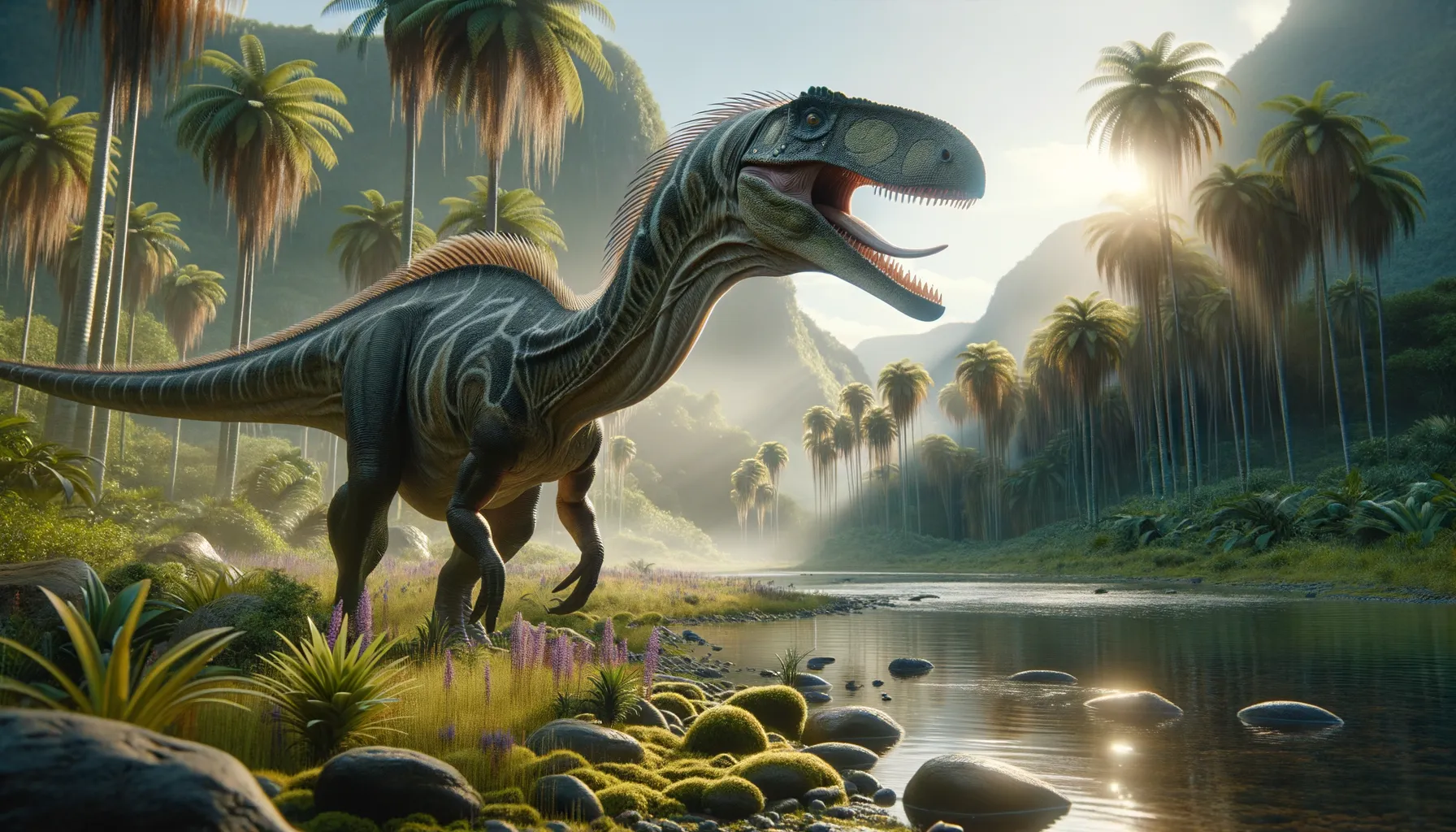
Angaturama
Master of water and land hunting skills.
Period
Cretaceous
Length
Measured about 7 to 8 meters long.
Height
Roughly 1.5 meters tall at the hips.
Weight
Approximately 450 to 500 kilograms.
With its sleek, fish-eating adaptations, Angaturama was a remarkable dinosaur that thrived in the Cretaceous period of Brazil. It possessed a long, narrow snout with conical teeth, ideal for snaring slippery prey from the rivers and coastal regions it inhabited. As a member of the spinosaur family, this dinosaur has intrigued scientists with its blend of aquatic and terrestrial traits, leading to ongoing research into its unique lifestyle and ecological role.
Diet
Angaturama primarily fed on fish, using its crocodile-like snout to catch prey in rivers and streams. It likely supplemented its diet with small dinosaurs and other animals it could catch near the water's edge.
Hunting
Angaturama was likely an ambush predator, waiting near water sources to catch unsuspecting fish with its long, narrow jaws. Its conical teeth suggest it was well-equipped to hold slippery prey tightly, preventing escape.
Environmental challenges
Living in a region prone to seasonal changes, Angaturama faced challenges such as fluctuating water levels that could influence the availability of food. Competition with other spinosaurids might have pushed Angaturama to develop specific hunting techniques. It had to adapt to both terrestrial and aquatic environments to survive, taking advantage of diverse food sources. Drought conditions would have required it to travel further in search of viable hunting grounds and water sources.
Speed
Moderately fast due to its sleek body shape.
Lifespan
Estimated to be around 20 to 30 years.
First discovery
Discovered in Brazil in the early 1990s.
Fun Facts
- Angaturama was a theropod dinosaur known for its long, crocodile-like snout.
- It lived during the Early Cretaceous period, about 110 million years ago, in what is now Brazil.
- This dinosaur is believed to have been a fish-eater, as indicated by its snout and conical teeth.
- Angaturama was relatively lightweight and agile compared to some other theropods.
- Its name means 'noble spirit', derived from the Tupi language of indigenous Brazilians.
- Angaturama was discovered in the Romualdo Formation of the Araripe Basin, a rich fossil site in northeastern Brazil.
- Though often reconstructed with a sail, it's debated whether Angaturama actually had one.
Growth and Development
Angaturama, like many theropods, would have experienced rapid growth during its early years to reach a size sufficient for hunting and defense. As it aged, its growth would slow, focusing energy on maintaining muscle mass and overall health. Fossil evidence suggests it developed strong limb bones, supporting both aquatic locomotion and terrestrial activities. Juveniles might have had slightly different diets than adults, gradually shifting as they grew.
Habitat
Angaturama inhabited semi-aquatic environments near rivers and coastlines in what is now Brazil. Its habitat was rich in diverse wildlife, making it a thriving ecosystem for predators like Angaturama. The lush vegetation and abundant water sources provided an ideal location for feeding. The area's geographic position offered protection and numerous resources crucial for its survival.
Interaction with other species
Angaturama may have coexisted with other large theropods but likely had specialized niches to reduce direct competition. Its fish-based diet would reduce rivalry with other carnivores preferring terrestrial prey. Angaturama's presence impacted local ecosystems, influencing the populations of aquatic species. Fossil sites suggest it shared its habitat with various dinosaurs, fostering a dynamic and diverse community.
Natural lifespan
Its natural lifespan likely ranged from 20 to 30 years.
Reproduction
Angaturama likely laid eggs, like other theropods, with nests possibly situated near water sources for easy access to food. Parental care might have involved guarding the nests from predators and ensuring the young were safely introduced to their aquatic environment. Hatchlings would have been vulnerable, needing rapid growth to survive potential threats. Fossil evidence points to communal nesting areas, indicating some social nesting behavior.
Social behaviour
Angaturama might have exhibited solitary or small-group behaviors, especially during hunting. Its lifestyle suggests occasional group interactions, particularly during breeding seasons. Communal nesting hints at shared spaces or cooperative behavior in certain contexts. Social structure likely varied with environmental conditions, balancing competition and cooperation.
Fossil locations
Angaturama fossils have primarily been found in Brazil's Araripe Basin. The region's fossil deposits provide excellent conditions for preserving spinosaurid remains. This locality has yielded numerous dinosaur species, highlighting its historical biodiversity. Further excavation continues to uncover more about their coexistence and ecology.
